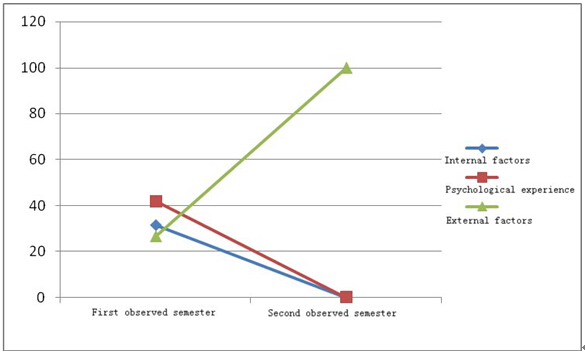
Figure 14 Comparison of reasons for dropping out during the two semesters observed (professional tutors)

Figure 15 Comparison of reasons for dropping out during the two semesters observed (teaching assistants)
2.3 Comparison of reasons for dropping out between diploma programme students and bachelor’s degree programme students
Are there any differences between the reasons for dropping out given by diploma programme students and bachelor’s degree programme students? A comparison shows that the difference is negligible, except that the teaching assistants place more emphasis on the continuous influence of work-study conflicts, which is related to the dropouts’ living conditions and personal characteristics. Students that dropped out during the second semester place more emphasis on a lack of sense of belonging to university life. From the perspective of the professional tutors, the proportion of psychological experience is lower, while the proportion of external and internal factors is higher, implying that they place greater emphasis on external factors when considering dropout rates. From the perspective of teaching assistants, the proportion of psychological experience and internal factors is lower and the proportion of external factors is higher. During the first semester they tend to focus on external factors, which fit in with the role they play and the dropouts’ personal characteristics. Overall, the reasons for dropping out given by both diploma programme and bachelor’s degree students are essentially identical during the three semesters observed. To put it another way, while the reasons for dropping out do differ over the course of the three semesters observed, the dropouts share common problems before and after enrollment.
Ⅴ. Conclusion and discussion
Based on the “Attribution analysis framework of ODL dropouts”, this report presents a close analysis of English major students from 14 PRTVUs in China, who enrolled either in a diploma programme or a bachelor’s degree programme in the spring semester of 2010. It analyzes different dropout rates over the course of three consecutive semesters. The results show that an unsuccessful learning experience mainly occurs during the first and second semester, while the dropout rate for the third semester is comparatively low. The reasons for dropping out of a diploma programme or a bachelor’s degree programme are relatively similar. From the perspective of the students themselves, poor prior knowledge and skills, an absence of interaction with tutors, lack of learning motivation and lack of learning input explain why they decided to dropout. The tutors stress the heavy mental pressure that derives from having an insufficient academic background. The teaching assistants focus on non-academic factors, such as busy life and work. The reasons mentioned above are closely related to insufficient preparation prior to enrollment. That is to say, even though ODL is theoretically available to everyone, it also requires that students meet certain academic standards, such as the ability to use ICT, allocate time appropriately and prepare well in advance.
This research aims to help ODL institutions discover students’ reasons for dropping out in order to lower dropout rates and encourage students to complete their courses. The findings reveal that many students lack ODL related abilities; in the future, ODL institutions should continue to help students use ICT, teach them to allocate time appropriately, encourage online and offline interaction between students and teachers, and promote self-motivation. ODL institutions endeavor to provide a thorough learner support. However, they should also place emphasis on ODL related skills in order to help students address the challenges facing them head-on.
Ormond Simpson of the Open University of the UK is a well-known expert of ODL dropout and retention rates. He once compared ODL to a revolving door. Students may be ejected almost as soon as they have got in. As a result, ODL institutions must improve their teaching quality and provide thorough learner support in order to lower their dropout rate and increase their retention rate. Simpson agrees that ODL institutions should place more emphasis on cost-effectiveness and rate of return on investment so as to make best use of limited resources (Simpson, 2008、2010). Members of this research group (Du Yongxin, 2011, 2012; Yang Yongjian, 2011a, 2011b, 2012; Luo Hongwei, 2011a, 2011b; Qi Yansheng, 2011, 2012; Liu Yongquan, 2011a, 2011b, 2012a, 2012b; Guo Hongxia, 2011; Rong Huali, 2011, 2012; Chen Jie, 2011; Chen Henan, 2012; Sun Xiaoling, 2012; Zhang Ying, 2012; Zhang Ping, 2012; Zhao Tiecheng, 2012) have considered ODL English major dropout rates from a variety or angles and have made some significant progress. They will now need to gain feedback on cost-effectiveness and rate of return on investment from ODL institutions in order to explore the issue further.